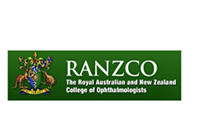Blocked Tear Ducts
Tear duct is a membranous canal that drains the tears from the eyes into the nasal cavity. Blocked tear ducts also known as dacryostenosis or congenital lacrimal duct obstruction is a common condition in infants that may affect one or both eyes.
Tears is a saline liquid produced in the lacrimal gland, located under the browbone behind the upper eyelids. Tears keeps the eyes lubricated and clears off the dust, microorganisms and other particles. Tears also contain antibodies and protect the eyes from infections. Tears move along the eyelids and drain through small openings called lacrimal ducts located at the end of the eyelids into the lacrimal sac and then through the nasolacrimal ducts they drain into the back of the nose. Lacrimal ducts as well the nasolacrimal ducts are called as tear ducts.
In tear duct obstruction the nasolacrimal ducts are blocked because of infection or have not completely opened at the time of birth causing accumulation of fluid in the tear sac and the inflammation as well the infection.
Blocked tear ducts is often diagnosed by the symptoms such as pooling of tears in the corner of the eyes, excessive tearing that runs down the cheeks, flow of tears as if the child is crying though the child is actually not crying, mucus or yellowish discharge in the eyes, and reddened skin below the eyes.
Though blocked tear ducts is a congenital condition it may not be evident at birth because infants produce tears only after several weeks after birth. In most of the cases, the blocked tear ducts open on their own by the age of one year.
The condition is diagnosed based on the medical history and physical examination. No additional tests are usually required to confirm the diagnosis.
Keep the eyes and eyelids clean. Wash the eyes with warm wet wash cloth. Gentle massage of the tear ducts 2 to 3 times a day may be recommended. Only in the cases of infection antibiotic eye drops or ointment may be prescribed.
In cases where the ducts do not open by their own surgical probing may be performed. In this procedure, the doctor will insert a probe into the nasolacrimal duct to open it. Occasionally, a small tube or stent is placed into the nasolacrimal duct to keep it open.







